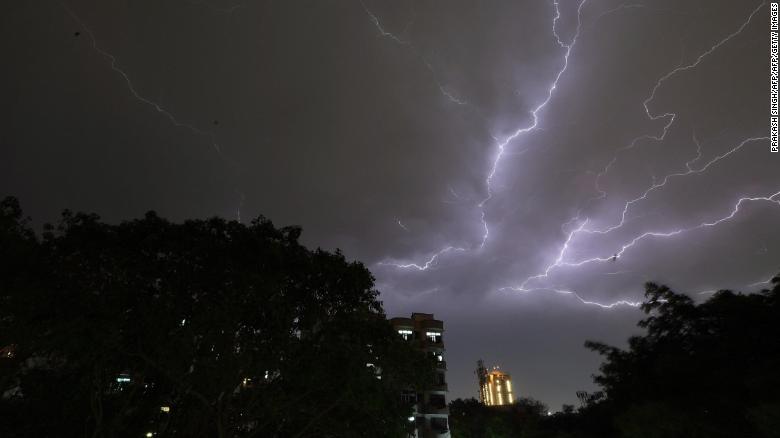Freak Weather in India Left 115 Victims After Massive Storms

Authorities in India warn citizens that after the massive storms in the last days that made over 115 victims, there will be four more days of high winds and isolated thunderstorms. On 2 May, states of Rajasthan, Uttar Pradesh, and Uttarakhand have been under a harsh weather: huge winds and lightning strikes created a dust storm that made many victims, injuring hundreds more.
The Indian Meteorological Department stated that more high winds, dust storms, and isolated thunderstorms will continue to affect the areas for 5 days. The warning is of yellow-category, meaning that the residents must be aware of the weather. If the warning becomes orange or red category, they will need to find a better shelter and protect themselves, said Hemant Gera, who works at the Rajasthan disaster management and relief department.
The relief commissioner Sanjay Kumar (Uttar Pradesh) said in an interview that “today and tomorrow in some parts of western Uttar Pradesh, we are expecting thunderstorms … the authorities have been told to be on alert (for greater) loss of life so that they can respond. From the state level, we are monitoring and we are trying to get satellite imagery data also to alert, and disseminate information to the villages.”
A Disastrous Storm
Sanjay Kumar also said that this storm is “one of the most disastrous in recent times” that hit Uttar Pradesh.
The director of India Meteorological Department Lucknow, JP Gupta stated that Uttar Pradesh will not face any dust storms for the next days:
“What happened on May 2, that’s not expected for now at least for the next three, four days.” Gupta explained that the sandstorm was the result of strong winds from the Bay of Bengal, which interacted with an area of low pressure.
In the wake of the storm, electricity poles fell, trees were uprooted and there have also been water shortages. Most of the deaths were the result of falling debris and walls that collapsed.
CNN Meteorologist Gene Norman stated that people in the affected regions should “stay alert of changing weather conditions, avoid sleeping unprotected outdoors, and prepare to get to higher ground in the event of heavy rain.”
Gene Norman also said that the majority of the fatalities were in rural areas, as they didn’t hear the meteorological warnings and their shelter options were limited.
0 comments